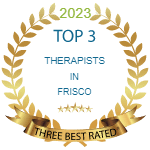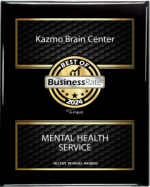Attachment disorder is a condition that makes it hard for people to connect with others. It usually starts in early childhood, but it can continue into adulthood.
Most babies develop a strong emotional attachment to their caregivers very early. They may show signs of anxiety when their caregiver is away, and they may feel relieved when they are reunited. If a baby’s caregiver does not provide the care they need, they may develop attachment disorders.
These babies don’t seem to be able to form close relationships with their caregivers, and they don’t seem to develop any emotional attachments. This might be due to an insecure attachment style in adults – adults who have this style may show avoidance or ambivalence in relationships, or they may behave in an unorganized or inconsistent way.
Attachments: Secure vs. Insecure
Two attachment styles can develop due to early childhood experiences with parents and caregivers: secure and insecure attachments.
Secure Attachments
Repeated positive experiences with a caregiver help infants develop a secure attachment. When an adult responds to a baby’s cries with feeding, changing, or comfort, the baby learns that they can rely on the adult to keep them safe and to meet their needs.
Securely attached children form better relationships with others and solve problems more easily. They are more willing to try new things and explore independently, and their reactions to stress are less extreme.
Insecure Attachments
If a baby doesn’t feel safe and loved, it can lead them to develop an insecure attachment style. This means they may be less likely to trust others and be anxious and afraid around them.
Attachment Disorder Symptoms
The following are symptoms of an attachment disorder in a child:
- Bullying or causing harm to others.
- Clinginess to an extreme.
- Inability to smile.
- Intense rage, absence of eye contact, absence of fear of strangers.
- A lack of regard for caregivers.
- Obnoxious behavior.
- Inadequate impulse control.
- Self-destructive tendencies.
- Observing others play but refusing to participate.
- Withdrawn or listless moods.
Attachment Disorder Diagnosis
A pediatrician or psychologist will diagnose an attachment disorder in children. This assessment may include the following:
- Interviews with caregivers about the symptoms of the child.
- Observations of a child’s interactions with caregivers.
- Since birth, a record of home and family life.
- An assessment of parents and caregivers’ parenting styles and practices.
Attachment Disorders’ Causes
Attachment problems can arise for various reasons, but they are usually the result of childhood experiences. Inconsistent or neglectful caregivers, for example, may contribute to childhood attachment disorders and adult attachment issues.
Some children develop attachment disorders, while others in the same environment do not. However, researchers agree that there is a link between attachment disorders and significant neglect or deprivation, repeated changes in primary caregivers, or being raised in institutional settings.
Other possible risk factors for attachment disorders include:
- Abuse (physical, emotional, or sexual.)
- Parents with poor parenting skills.
- Anger problems in parents.
- Neglect by parents.
- Parents are suffering from psychiatric disorders.
- Prenatal alcohol or drug use.
Managing an Attachment Disorder
Firstly, there are things you can do to help your child or a child in your care cope if they have been diagnosed with an attachment disorder. Caregivers can help by being patient, having realistic expectations, and seeking appropriate professional treatment.
You can help a child cope by doing the following:
Setting boundaries: It is critical for providing consistency and stability. Set limits to make a child’s world more predictable and trustworthy. Explain what is expected, and then provide consistent consequences. This can assist children in regaining trust and improving self-control.
Maintain a schedule: Having a daily routine that kids can follow can help establish consistency. Even during transition periods, this can help children feel like their world is more consistent and trustworthy.
Discuss your feelings: Assist children in learning to recognize their emotions. Instead of labeling emotions as “bad,” focus on simply labeling them and discussing how children can manage and express their emotions.
Lastly, If you see any signs that your child may have an attachment disorder, please contact us at Kazmo Brain Center. We can help your child get the help they need.







